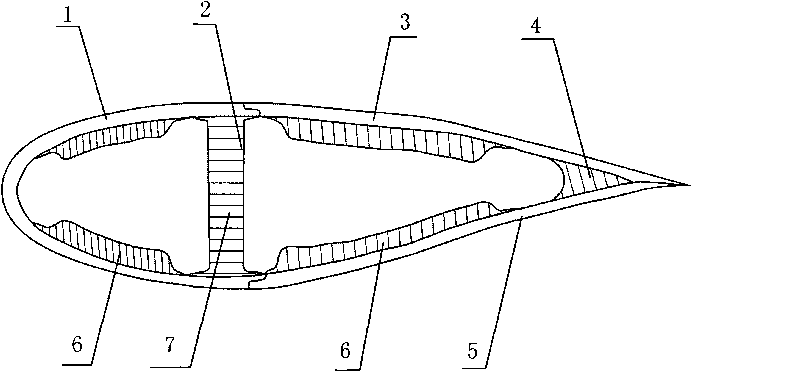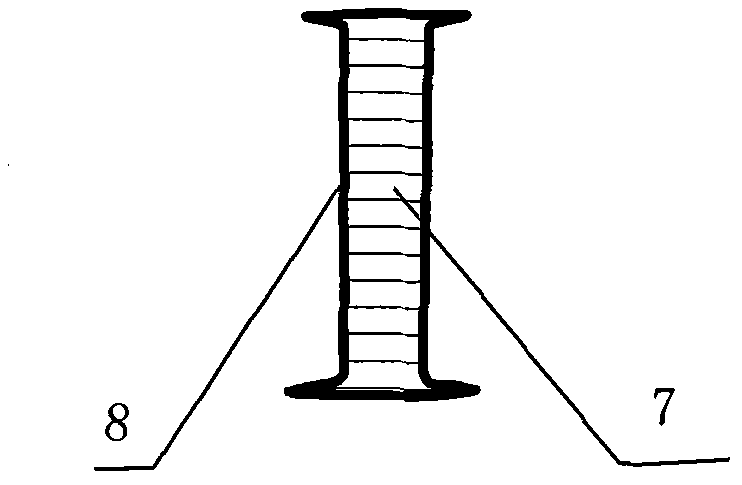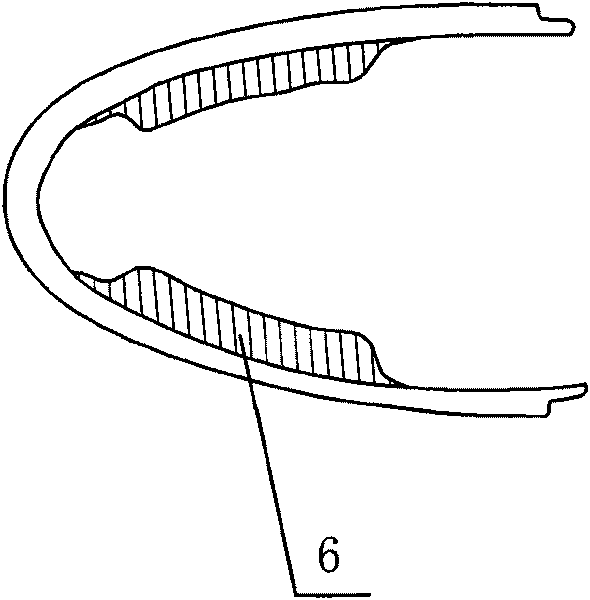Method for making vane of wind-driven generator by adopting ultra-high strength polyethylene fiber composites
A technology of polyethylene fiber and composite materials, which is applied in the direction of wind turbine components, wind engines, and wind engines consistent with the wind direction, etc. It can solve the problems of low strength, heavy weight of FRP blades, poor impact resistance, etc., and achieve high performance Excellent, light weight and stable quality effect
- Summary
- Abstract
- Description
- Claims
- Application Information
AI Technical Summary
Problems solved by technology
Method used
Image
Examples
Embodiment Construction
[0012] The present invention will be further described in detail below in conjunction with the accompanying drawings and embodiments.
[0013] The main structure of the cross-section of a kilowatt-class ultra-high-strength polyethylene composite wind turbine blade is as follows: figure 1 As shown, the blade leading edge 1 with a sandwich structure, the blade main beam 2 with a sandwich structure, the blade upper shell 3 with a sandwich structure, the blade lower shell 5 with a sandwich structure, and the blade trailing edge shell bonding rib 4 .
[0014] A method for manufacturing blades of wind power generators using ultra-high-strength polyethylene fibers, which firstly has the pre-fabricated blade leading edge 1, blade main beam sandwich structure, blade upper shell 3, blade lower shell 5, and blade trailing edge bonding ribs 4 Then use medium temperature curing epoxy adhesive to bond the parts made of the above mold step by step, and finally carry out surface treatment an...
PUM
| Property | Measurement | Unit |
|---|---|---|
| density | aaaaa | aaaaa |
| tensile strength | aaaaa | aaaaa |
| tensile strength | aaaaa | aaaaa |
Abstract
Description
Claims
Application Information
 Login to View More
Login to View More - R&D
- Intellectual Property
- Life Sciences
- Materials
- Tech Scout
- Unparalleled Data Quality
- Higher Quality Content
- 60% Fewer Hallucinations
Browse by: Latest US Patents, China's latest patents, Technical Efficacy Thesaurus, Application Domain, Technology Topic, Popular Technical Reports.
© 2025 PatSnap. All rights reserved.Legal|Privacy policy|Modern Slavery Act Transparency Statement|Sitemap|About US| Contact US: help@patsnap.com



